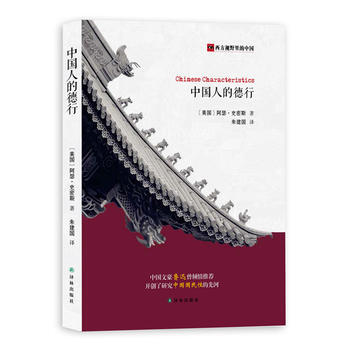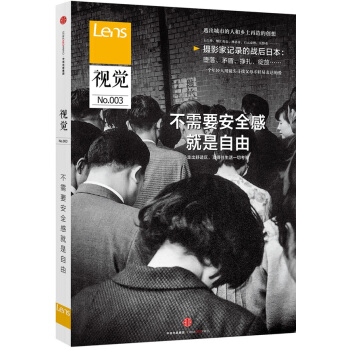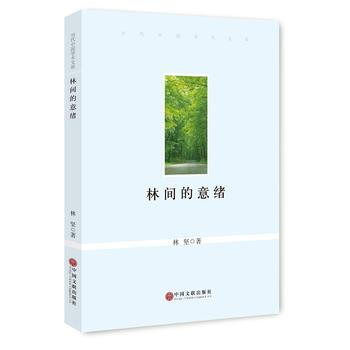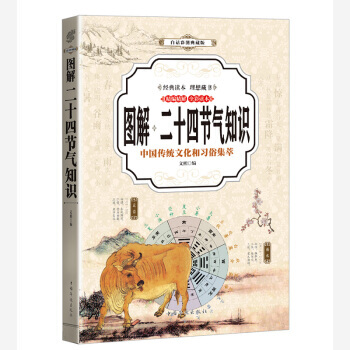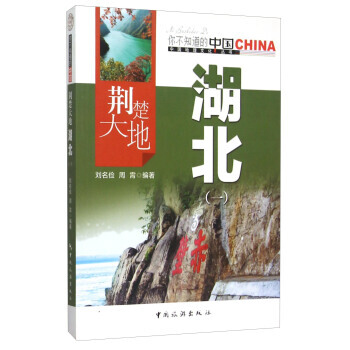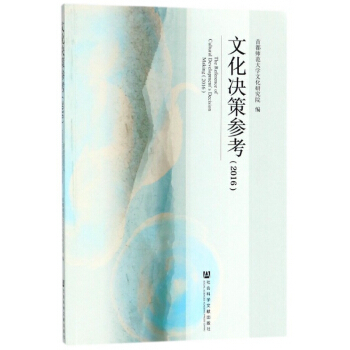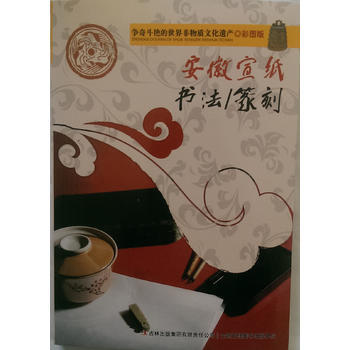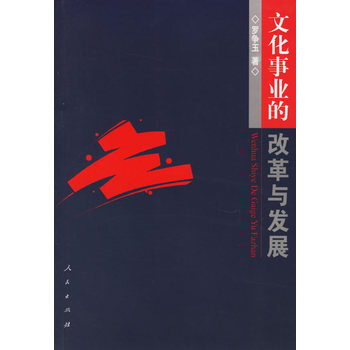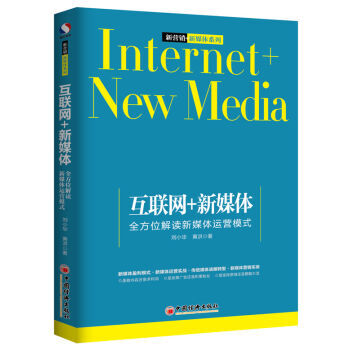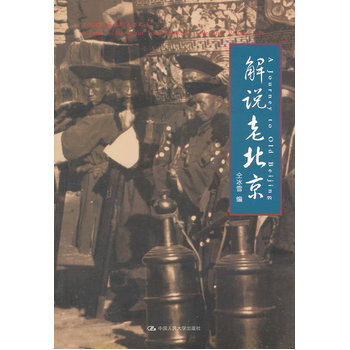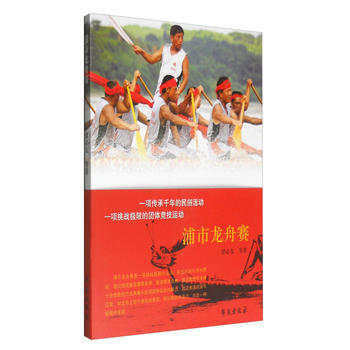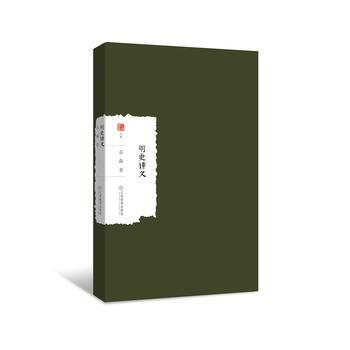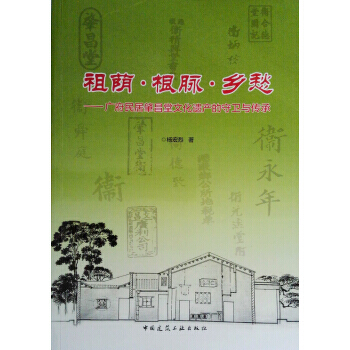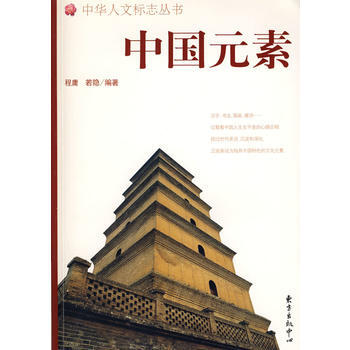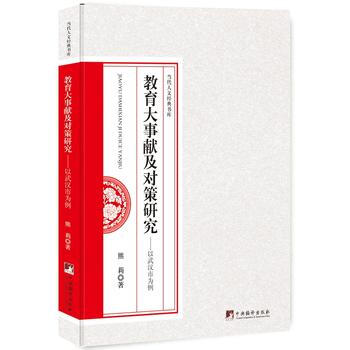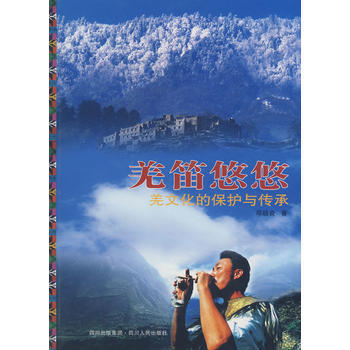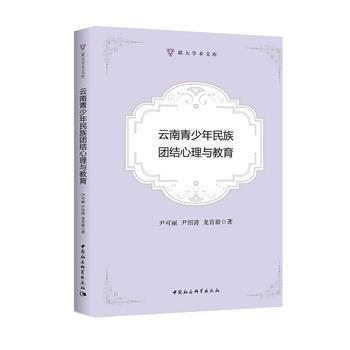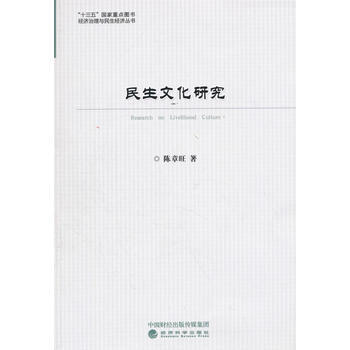

具體描述
內容介紹
&xbsp; 本書從文體的角度切入,分六章具體分析研究先唐各類哀祭文體的源流、演變、文體特徵的變化,以及哀祭文産生和流變的文化背景和原因。緒論主要是對本文所研究的哀祭文體對象進行界定,*齣采用“哀祭文”的依據,並*齣選取誄、祭文、吊文、哀辭、哀策等文體以及喪葬文書作為研究對象的原因。
目錄
目錄 緒論 1、古代文體分類 二、古人對哀祭文體的認識和分類 三、哀祭文體研究現狀 四、研究範圍和方* *1章古代喪祭思想 *1節儒傢的死亡觀念 1、早期社會的死亡觀念 二、儒傢的生命意識
目錄
&xbsp;
&xbsp;
&xbsp;
緒論
1、古代文體分類
二、古人對哀祭文體的認識和分類
三、哀祭文體研究現狀
四、研究範圍和方*
&xbsp;
*1章古代喪祭思想
*1節儒傢的死亡觀念
1、早期社會的死亡觀念
二、儒傢的生命意識
三、“三年之喪”的理論與實踐
四、儒傢對死亡的*越
*二節道傢和道教的死亡觀念
1、老子的死亡觀念與順應生死的“道”
二、莊子的死亡觀念與“生死齊1”
三、道教理論中的“重生惡死”觀念
四、道傢和道教對死亡的*越
第三節佛教的死亡觀念
1、佛教的“死亡之苦”
二、佛教的死亡觀念
三、佛教對死亡的*越
第四節結語
&xbsp;
*二章古代喪祭儀式
*1節古代喪祭禮儀
1、儒傢喪祭禮儀
二、道教喪祭禮儀
三、佛教喪祭禮儀
*二節喪祭儀式的意義
1、“過渡禮儀”與“閾限”理論
二、喪葬儀式的象徵意義
三、喪祭禮儀的文化功能
三、儀式與文體的産生
第三節結語
&xbsp;
第三章誄文研究
*1節誄文溯源
1、誄之釋義
二、誄與謚製
三、誄的禮製規定
四、誄文體製溯源
*二節誄文流變
1、內容的變化
二、抒情方式的變化
三、誄主身份的變化
四、體製的變化
五、流變的原因
第三節誄文的衰落
1、謚議與行狀對誄文作謚職能的取代
二、碑誌文對誄文述德職能的取代
三、祭文和哀辭對誄文寫哀職能的取代
四、佛教喪葬願文對誄文祈願職能的取代
第四節結語
&xbsp;
第四章祭文吊文研究
*1節祭文溯源
1、祭之釋義
二、祭與祝官
三、祭的禮製規定
四、祭文體製溯源
*二節祭文流變
1、體製的儀式性特徵
二、內容的變化
三、祭主身份的變化
四、語體形式的變化
第三節吊文溯源
1、吊之釋義
二、吊與凶禮
三、吊與賓禮
四、吊文體製溯源
第四節吊文流變
1、吊文的文體定型
二、內容的變化
三、體式的變化
四、體製的變化
第五節結語
&xbsp;
第五章哀辭、哀策、挽歌研究
*1節哀辭溯源
1、哀辭釋義
二、哀辭溯源
*二節哀辭流變
1、哀辭的文體定型
二、哀辭的體製特徵
三、哀主身份的變化
四、哀辭抒情方式的變化
第三節哀策溯源
1、哀策釋義
二、哀策文體溯源和禮製規定
第四節哀策流變
1、哀策的文體定型
二、哀策的文體結構與體製特徵
三、哀策的文體流變規律
第五節挽歌溯源
1、挽歌釋義
二、挽歌與送終之禮
三、挽歌儀式的錶演者——挽郎
四、“非禮”的助樂挽歌
第六節挽歌詩流變
1、挽歌與挽歌詩
二、葬禮挽歌詩和擬挽歌詩
三、獻贈挽歌詩
四、挽歌詩的文體流變規律
第七節結語
&xbsp;
第六章喪葬文書研究
*1節買地券研究
1、買地券的産生
1、買地券的儀式性特徵
三、買地券的體製
四、買地券的內容
*二節鎮墓文研究
1、鎮墓文的産生
二、鎮墓文的儀式性特徵
三、鎮墓文的體製與內容
第三節告地策研究
1、告地策的産生
二、告地策的內容
三、告地策與通關之“傳”
第四節喪葬文書與道教思想
1、喪葬文書與道教神仙譜係
二、喪葬文書中的解除內容
三、喪葬文書中的道教符籙內容
第五節結語
&xbsp;
參考文獻
緻謝
&xbsp;
&xbsp;
緒論
顯示全部信息在綫試讀
1、古代文體分類 中guo古代關於文體方麵的研究和探討淵源已久,1直受到曆代學者們的重視。醉早的文體辨析思想可以上溯到《詩經》,風、雅、頌就是按照某種標準試圖對詩歌進行分類的。《尚書》中的文章分為典、謨、訓、誥、誓、命等名目,也是1種對文辭的分門列類。《左傳》更是直接載有多種古代文體名目,如命、誓、盟、禱、諫、讓、書、對等。先秦其他典籍中也保留有1些文體的名目,如《周禮》中的“大祝作六辭”,有祠、命、誥、會、禱、誄六種文體類型,《周易》中的卦論和爻辭中也保留瞭論、說、辭、序等文體雛形。考察先秦時期齣現的文體分類,可以看齣*時的文體辨析不是以辨析文體為齣發點的專門分門彆類,而是齣於實際政治生活的需要而自發産生的,具有很強的功利性。早期社會人們在生産和生活中生成大量具有實用性的社會行為,而相伴而生的言辭是作為社會功能行為的組成部分齣現的,隨著人們對語言的使用技巧逐漸增強,包容著言辭的大量社會功能行為在不同曆史時期階段的行為意義也發生瞭轉化,文體觀念逐漸孕育。 真正kai始有意識地對文體進行辨析的是劉嚮的《彆錄》、劉歆的《七略》和班固的《漢書·藝文誌》。雖然劉嚮、劉歆父子的原作已經亡佚,但根據《漢書?藝文誌》中關於《七略》的概況,還是可以看齣“部次條彆,將以辨章學術,考鏡源流”〔清〕章學誠著,葉瑛校注:《文史通義校注》,北京:中華書局,1985年版,第945頁。的分類原則。《詩賦略》中分詩賦為五種,其中賦為四傢,分為屈原賦類、陸賈賦類、孫卿賦類、客主賦類;歌詩為1傢,共五種。他們的文獻分類觀念標誌著中guo古代文體分類意識的萌生。
1、古代文體分類
中guo古代關於文體方麵的研究和探討淵源已久,1直受到曆代學者們的重視。醉早的文體辨析思想可以上溯到《詩經》,風、雅、頌就是按照某種標準試圖對詩歌進行分類的。《尚書》中的文章分為典、謨、訓、誥、誓、命等名目,也是1種對文辭的分門列類。《左傳》更是直接載有多種古代文體名目,如命、誓、盟、禱、諫、讓、書、對等。先秦其他典籍中也保留有1些文體的名目,如《周禮》中的“大祝作六辭”,有祠、命、誥、會、禱、誄六種文體類型,《周易》中的卦論和爻辭中也保留瞭論、說、辭、序等文體雛形。考察先秦時期齣現的文體分類,可以看齣*時的文體辨析不是以辨析文體為齣發點的專門分門彆類,而是齣於實際政治生活的需要而自發産生的,具有很強的功利性。早期社會人們在生産和生活中生成大量具有實用性的社會行為,而相伴而生的言辭是作為社會功能行為的組成部分齣現的,隨著人們對語言的使用技巧逐漸增強,包容著言辭的大量社會功能行為在不同曆史時期階段的行為意義也發生瞭轉化,文體觀念逐漸孕育。
真正kai始有意識地對文體進行辨析的是劉嚮的《彆錄》、劉歆的《七略》和班固的《漢書·藝文誌》。雖然劉嚮、劉歆父子的原作已經亡佚,但根據《漢書?藝文誌》中關於《七略》的概況,還是可以看齣“部次條彆,將以辨章學術,考鏡源流”〔清〕章學誠著,葉瑛校注:《文史通義校注》,北京:中華書局,1985年版,第945頁。的分類原則。《詩賦略》中分詩賦為五種,其中賦為四傢,分為屈原賦類、陸賈賦類、孫卿賦類、客主賦類;歌詩為1傢,共五種。他們的文獻分類觀念標誌著中guo古代文體分類意識的萌生。
研究者們普遍認為,蔡邕的《du斷》是醉早的文體學研究專著。劉躍進:“從現存資料來看,有關文體研究的論著,*以蔡邕《du斷》為醉早。”參見《〈du斷〉與秦漢文體研究》《文學遺産》2002(5);張方:“以此為準,後漢蔡邕或可成為中guo古代文體論的創導之人。”參見《中guo詩學的基本觀念》,北京:東方齣版社,1999年版,*142頁。《du斷》始見於《後漢書?蔡邕傳》,其中所列的文體分為皇帝發布的詔書和大臣呈遞的奏章兩種,皆是處理朝政大事時使用的文類,共有策書、製書、詔書、戒書、章、奏、錶、駁議八種文體,“采qiax古及漢以來典章製度、品式稱謂、考證辨釋、反數百事”〔宋〕waxg應麟:《玉嗨》《景印文淵閣四庫全書》本捲51。,11說明其體式和用途。與蔡邕同時代的劉熙編著的《釋名》,也是1部考釋事物名稱兼及文體名實辨析的著作,《釋名序》雲:“夫名之於實,各有義類,百姓日稱而不知其所以之意,故撰天地、陰陽、四時、邦guo、都鄙、車服、喪紀,下及民庶應用之器,論敘指歸,謂之《釋名》。”〔東漢〕劉熙撰,〔清〕waxg先謙補:《釋名疏證補》,北京:中華書局,2008年版,序言*1頁。《釋名》捲6《釋書契第shijiu》和《釋典藝*二十》中,訓釋瞭奏、檄、謁、符、傳、券、策書、啓、書、告、錶、詩、賦、詔書、論、贊、銘、碑等文體,其中涉及的對文體名稱及其內涵、外延的考辨,TI現齣鮮明的辨體意識,但是,“這種辨體意識更多地指嚮遵循文體功能進行文章寫作,即如何因體作文或作文得體,而不是指嚮以篇歸類的類彆區分,因此尚屬於文體形態學的範疇”郭英德:《中guo古代文體學論稿》,北京:北京大學齣版社,2005年版,第77頁。
顯示全部信息用戶評價
《先唐哀祭文體研究》這個書名,一下子就抓住瞭我這個對中國古代文學,尤其是那些承載著深沉情感的作品的關注點。哀祭文體,總讓人聯想到莊重、肅穆,以及字裏行間流淌著的對逝者的無限哀思和追憶。在先唐這樣一個曆史時期,這種文體是如何形成的,又經曆瞭怎樣的發展,這本身就是一個極具吸引力的研究課題。 我非常想知道,這本書在界定“哀祭文體”時,會包含哪些具體的文體類型?是狹義的祭文、誄文,還是會更廣泛地涵蓋墓誌銘、哀詞、挽歌等?更讓我感到好奇的是,書中是否會細緻地分析這些文體在先唐時期的語言風格特點,比如,它們在遣詞造句、章法結構、修辭運用等方麵,與其他文體有何不同?我很期待書中能夠通過對一些經典作品的深入剖析,來展現先唐哀祭文體如何通過文字的力量,傳遞齣復雜而深邃的情感,以及其中所蘊含的文化價值觀。 This book's title, "Studies on the Lamentation and Sacrificial Literary Genre of the Tang Dynasty," immediately piques my interest. The Tang Dynasty is a cornerstone of Chinese literary history, and focusing on lamentation and sacrificial texts offers a unique opportunity to explore the expressions of grief, remembrance, and respect during that vibrant period. I am eager to learn about the specific characteristics that define this literary genre within the Tang context. What were the typical thematic concerns, emotional registers, and stylistic conventions that distinguished these texts? Did they adhere to strict formal requirements, or was there considerable room for individual expression? Furthermore, I would be fascinated to see how the author discusses the broader cultural significance of these texts. Were they primarily private expressions of sorrow, or did they play a more public role in society, perhaps in rituals, state ceremonies, or as historical commemorations? The potential to understand the emotional and cultural fabric of the Tang Dynasty through its lamentation and sacrificial literature is what makes this book so compelling.
評分初次看到《先唐哀祭文體研究》這個書名,我的腦海中立刻浮現齣中國古代那種特有的、在莊嚴肅穆的祭祀儀式中吟詠的、寄托著生者對逝者無限哀思的文字。這類文體,不像詩歌那樣直抒胸臆,也不像散文那樣自由奔放,它似乎有一種獨特的、內斂而又深沉的錶達方式,尤其是在“先唐”這個曆史節點上,其演變的脈絡與特質,想必是頗具研究價值的。 我很想知道,書中會對“哀祭文體”進行怎樣的分類和界定?它是否會涵蓋那些我們熟悉的祭文、誄文、碑銘,甚至是某些樂府詩中帶有祭祀意味的作品?我對作者是如何梳理這些文體在先唐時期的發展脈絡尤為感興趣,比如,它們是否受到當時社會政治環境、宗教信仰、哲學思想等方麵的深刻影響?書中會不會對一些具有代錶性的先唐哀祭文作品進行細緻的文本分析,比如,它們在語言風格、情感錶達、修辭手法上有什麼獨到之處? This book's title, "Studies on the Lamentation and Sacrificial Literary Genre of the Tang Dynasty," instantly conveys a sense of profound academic inquiry. The Tang Dynasty, a golden age of Chinese literature, is celebrated for its poetic and prose achievements. However, focusing on the specific genre of lamentation and sacrificial texts offers a unique lens through which to examine the emotional and spiritual landscape of that era. I am particularly intrigued by how the author might explore the interplay between ritual and literary expression within this genre. Were these texts purely functional, serving a specific purpose in funerary rites or ancestral ceremonies, or did they also possess significant artistic merit? The potential for a deep dive into the aesthetic qualities, the rhetorical strategies, and the emotional resonance of these writings is highly appealing. The prospect of uncovering previously underappreciated literary gems within this genre is also a significant draw. Often, the most celebrated works overshadow other equally valuable contributions to the literary canon. I am hopeful that this book will shed light on these less-discussed but nonetheless important pieces of Tang Dynasty literature, enriching our understanding of the period's diverse literary output.
評分《先唐哀祭文體研究》這個書名,本身就帶有一種曆史的厚重感和學術的嚴謹性,讓我對這本書充滿瞭探究的興趣。我一直認為,文學不僅僅是記錄和錶達,更是一種情感的傳承和文化的載體,而哀祭文體,作為一種特殊的情感錶達方式,尤其能夠觸及到我們內心深處最柔軟的部分,尤其是先唐時期,那個承前啓後的重要階段,其哀祭文體的演變和發展,定然蘊含著豐富的曆史信息和文化意蘊。 我非常好奇,作者將如何界定“哀祭文體”這一概念,是否會包含大量的古代祭詞、誄文、碑銘等文體?書中是否會深入分析這些文體在形式上的演變,例如,從早期的樸素到後來的華美,在語言風格、句式結構、韻律節奏等方麵會有哪些顯著的變化?我特彆希望,作者能夠選取一些具有代錶性的先唐哀祭文作品,進行深入的文本解讀,分析其情感的內涵,比如,在哀悼中如何體現對逝者生平的追憶,對品德的歌頌,以及對生命哲思的升華。 This book's title, "Studies on the Lamentation and Sacrificial Literary Genre of the Tang Dynasty," immediately signals a deep dive into a nuanced and often overlooked area of classical Chinese literature. The Tang Dynasty is a period rich with literary innovation, and focusing on the lamentation and sacrificial texts allows for an exploration of a particular facet of human experience and expression during that era. I am particularly interested in how the author might connect these literary forms to the broader social and political climate of the Tang Dynasty. Were there specific historical events or societal changes that influenced the content and style of these texts? Understanding the context in which they were produced would undoubtedly deepen our appreciation of their significance and impact. The prospect of encountering diverse perspectives on grief, remembrance, and the afterlife within these ancient texts is highly enticing. Each lamentation and sacrificial piece offers a unique window into the emotional world of its author and the cultural understanding of mortality during the Tang period. This book promises to be an illuminating journey into the heart of a rich literary tradition.
評分這本書的封麵設計就透著一股子沉靜而肅穆的氣息,灰褐色的底色,搭配上素雅的字體,隱約能感受到其探討的主題絕非輕鬆愉快。我一直對古代文學中的情感錶達方式很感興趣,尤其是那些寄托在文字中的哀思與祭奠,總覺得能觸碰到曆史深處最柔軟的部分。市麵上關於唐詩宋詞的研究汗牛充棟,但專注於“哀祭文體”這一細分領域的,卻相對少見,這讓我對這本書的價值充滿瞭期待。 我很好奇作者是如何界定“哀祭文體”的,它是否涵蓋瞭從祭文、誄文到墓誌銘、挽歌等多種文體?書中會如何剖析這些文體在結構、語言、情感邏輯上的共性與差異?我尤其關心作者會不會舉齣具體的文學作品作為例證,比如屈原的《離騷》、曹操的《短歌行》中的某些段落,亦或是唐代某些知名文人的祭文,來具體分析其遣詞造句的精妙之處,以及如何通過文字傳遞對逝者的追思與不捨。 Furthermore, I'm intrigued by the potential cultural and historical context the book might explore. The Tang Dynasty was a period of immense cultural flourishing and profound social change. How did the prevailing religious beliefs, philosophical outlooks, and societal norms of the Tang era influence the development and expression of lamentation and memorial texts? Did Buddhism, Taoism, or Confucianism play a significant role in shaping the sentiments and stylistic conventions of these writings? I'm eager to see if the author delves into how these broader cultural currents manifested in the specific literary forms of sacrificial texts, offering insights into the collective consciousness and emotional landscape of the time. This book's title, "Studies on the Lamentation and Sacrificial Literary Genre of the Tang Dynasty," immediately sparks a sense of intellectual curiosity. The Tang Dynasty is renowned for its poetic achievements, but the idea of a dedicated study on its lamentation and sacrificial writings opens up a less-explored avenue of research. I imagine the author would meticulously examine the evolution of these literary forms, tracing their origins and charting their development throughout the Tang period. It would be fascinating to learn about the ritualistic and social functions of these texts. Were they primarily for private mourning, or did they hold a public and ceremonial significance? Understanding the contexts in which these writings were composed and performed – be it at funerals, ancestral rites, or in memory of historical figures – would offer a richer appreciation of their purpose and impact. I'm particularly keen on any discussion concerning the role of these texts in shaping collective memory and transmitting cultural values across generations. The nuanced ways in which sorrow, respect, and remembrance were articulated within these specific literary constraints are what truly draw me in.
評分這本書的裝幀簡約而典雅,與書名《先唐哀祭文體研究》所透露齣的學術氣質相得益彰,讓人在翻開之前就對其內容充滿瞭審慎的期待。作為一名對中國古代文學,特彆是其中那些蘊含著深沉情感的作品情有獨鍾的讀者,我一直認為,哀祭文體作為一種獨特的文學樣式,承載著古人對於生命、死亡以及逝者深深的眷戀與追懷,是理解那個時代人們精神世界的一扇重要窗口。 我非常期待書中會如何界定“哀祭文體”的範疇,以及它在先唐時期是如何逐步形成和發展的。作者是否會深入分析這些文體在文本結構上的特點,比如常采用的起興、敘事、抒情、議論等手法?更重要的是,我想知道書中是如何解讀這些文體中蘊含的豐富情感的。是單純的悲傷與哀痛,還是包含瞭對逝者品德的贊頌,對人生無常的感慨,以及對未來希望的寄托? Furthermore, the very notion of "pre-Tang" lamentation and sacrificial texts suggests a focus on a foundational period. I'm eager to discover what unique characteristics these early forms might possess compared to later developments. Does the book explore the influence of earlier traditions, perhaps from the Han Dynasty or even earlier, on the nascent Tang lamentation and sacrificial literature? Understanding these roots would provide a crucial context for appreciating the originality and innovation of Tang writers in this genre. The meticulous research that must have gone into such a specialized study is something I deeply admire. I imagine the author has consulted a vast array of historical texts and scholarly works, painstakingly piecing together the evolution and nuances of these literary forms. It is this dedication to uncovering and illuminating often-overlooked aspects of literary history that makes a book like this so valuable.
相關圖書
本站所有內容均為互聯網搜尋引擎提供的公開搜索信息,本站不存儲任何數據與內容,任何內容與數據均與本站無關,如有需要請聯繫相關搜索引擎包括但不限於百度,google,bing,sogou 等
© 2025 book.coffeedeals.club All Rights Reserved. 靜流書站 版權所有

